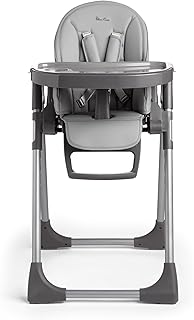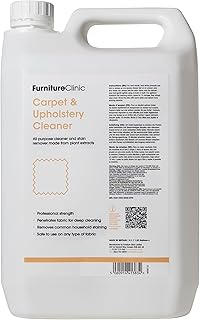Top Features to Look for in Baby Chairs
Choosing the right baby chair is a critical decision for every parent. With so many types of chairs designed for feeding, playtime, and relaxation, understanding the key features that contribute to safety, functionality, and comfort becomes paramount. A good baby chair not only ensures your child’s well-being but also enhances their development and makes parenting tasks significantly easier. This detailed guide will walk you through the top features to consider when buying a baby chair, helping you make an informed and confident choice.
1. Safety Features: A Parent’s Priority
Safety is the single most important factor when selecting a baby chair. Babies, especially in their early months, rely entirely on their surroundings to keep them secure. A reliable baby chair should have several built-in safety mechanisms to protect your child during usage.
1.1. Secure Strapping System
Baby chairs should be equipped with a secure harnessing system to keep your child safely seated. A three-point or, ideally, a five-point harness ensures that your baby is preventatively strapped in, reducing the risk of sliding, toppling, or climbing out. Make sure the straps are adjustable to accommodate your growing baby and constructed of soft, durable material to avoid irritation.
1.2. Sturdy Base and Anti-Slip Measures
The foundation of the baby chair must be stable and wide to prevent tipping. Look for chairs with anti-slip pads or rubber grips beneath the legs. These attributes are critical if you have smooth floors like tiles or wooden surfaces, as they help prevent the chair from sliding during use.
1.3. Locking Mechanisms
For chairs that recline, fold, or have moving parts, secure locking mechanisms are a necessity. These locks ensure that the chair remains fixed in position during use and prevent unintentional collapses that could put your child at risk.
2. Age-Appropriate Design
The design of the chair should reflect the age and development stage of your child. Whether you’re purchasing for a newborn, an infant, or a toddler, choosing age-appropriate features ensures the chair supports proper posture and keeps your child safe.
2.1. Reclining Options for Newborns
Newborns require a chair with a fully reclining backrest to accommodate their developing neck muscles and limited body control. Choose options that can recline to a flat or near-flat position, providing a safe and comfortable environment for feeding or napping.
People Also Look For:
- DECORNIJIA Highchair Cover and Polyester Shopping Cart Protector Dining Seat Cover for Versatile Dustproof Mat for High Chairs and...
- 7-in 1 Children\'s High Chair with Table and Wheels High Chair Adjustable Foldable Baby Chair Reclining Function Combination
- Furniture Clinic Leather Furniture Care Kit - Premium Cleaning Kit for Sofas & Furniture - 250ml Cleaner & Conditioner – For All...
- Nuby Travel Booster Seat – Compact and Foldable | Baby Sit Up Seat | Weaning Toddler Chair | Suitable for Ages 6 Months Plus (Pa...
- GiantexUK 5 Pieces Dining Table Set, Steel Frame Wooden Table and 4 High Back Chairs, 4-Seater Table and Chair Set for Home, Kitch...
2.2. Adjustable Features for Growing Babies
A baby chair with adjustable height, reclining angles, and removable trays grows with your child and provides extended value. Chairs with these features transition seamlessly from infancy to toddlerhood, ensuring years of use and saving parents from purchasing multiple chairs as their child grows.
2.3. Compact Designs for Toddlers
Toddlers benefit from chairs that are lightweight and easy to manage. Booster seats designed to attach to regular dining chairs or compact highchairs are excellent for older children learning to sit independently at the dining table.
3. Comfort: Providing Maximum Relaxation
Comfort is essential for both your baby and you. A comfortable child is more likely to stay seated without fussing, making feeding, playtime, or bonding moments more enjoyable.
3.1. Padded Seat and Head Support
Opt for baby chairs with ample padding, particularly around the seat, headrest, and shoulder straps. Soft, cushioned materials prevent your baby’s skin from chafing and provide added comfort during extended periods of use. For newborns, additional head support is essential to protect their delicate neck and skull.
3.2. Breathable Materials
Temperature regulation is key to your child’s comfort. Baby chairs with breathable fabrics or mesh panels prevent your baby from overheating, especially during the warmer months. These materials also dry quickly in case of spills.
3.3. Smooth Edges
Ensure the chair is free from sharp corners or rough edges. Rounded edges and seamless construction minimise the risk of accidental scratches or injuries and improve the overall comfort of the chair.
4. Easy Maintenance and Longevity
Babies can be messy, so parents should seek chairs that are easy to clean and durable enough to withstand daily use. Chairs designed with practical maintenance in mind are a lifesaver for busy households.
4.1. Removable and Washable Covers
Models with removable seat covers or cushions make cleanup a breeze. These covers are typically machine washable and allow you to maintain a clean and hygienic surface for your baby to sit on.
4.2. Wipeable Surfaces
Chairs with plastic or smooth finishes allow for quick wipe-downs after feeding or messy play sessions. Look for scratch- and stain-resistant materials to help the chair maintain its appearance over time.
4.3. Build Quality
Durability is another critical aspect of easy maintenance. Chairs made of sturdy materials such as stainless steel or high-quality plastic are more likely to withstand years of consistent use. If the chair includes moving parts, ensure they are constructed with strong components that won’t wear out prematurely.
5. Multifunctionality and Convenience
Modern baby chairs often come with added features to boost functionality and user-friendliness. Investing in a multifunctional chair can save you money and space while making parenting tasks easier.
5.1. Convertible Chairs
Convertible chairs adapt to your child’s needs over time. For example, some baby chairs transition from a highchair to a booster seat or even a toddler’s chair. This adaptability makes convertible chairs a cost-effective option in the long run.
5.2. Lightweight and Portable Designs
Portable baby chairs are a practical solution for families who travel or live in smaller spaces. Compact folding designs make storage and transportation easier, ensuring you can use the chair wherever you go.
5.3. Built-in Entertainment Features
Some chairs come with attached toy bars, built-in music, or vibration features to keep babies entertained. While these features aren’t a necessity, they can help soothe fussy children or occupy them during feeding or seating times.
6. Compliance with Safety Standards
Always ensure the baby chair you choose complies with recognised safety standards. In the United Kingdom, look for certifications such as British Standards (BS) or European Safety Standards (EN), which indicate the chair has undergone rigorous testing. Reliable brands provide detailed labels or documentation highlighting these certifications, giving you peace of mind as a parent.
Conclusion
Choosing the perfect baby chair involves careful consideration of safety, comfort, design, and practicality. From sturdy harness systems to adjustable features and easy-to-clean materials, every aspect of the chair should be chosen with your baby’s well-being in mind. By investing in a high-quality baby chair that aligns with your child’s developmental stage, you can create a safe and nurturing space for feeding, play, and relaxation.
Take the time to evaluate your family's needs, explore the available options, and prioritise products that meet safety standards. With the right baby chair, you not only meet your baby’s needs but also make your parenting journey smoother and more enjoyable.



